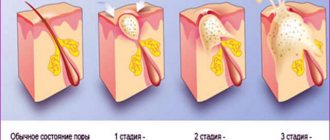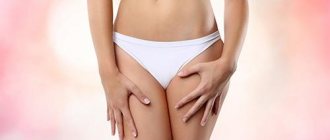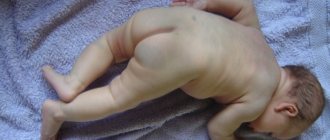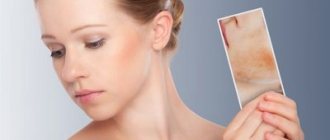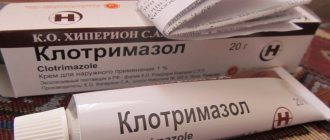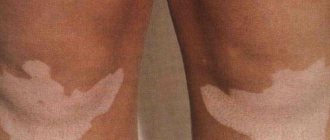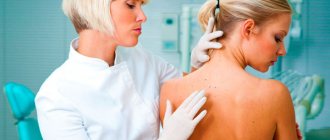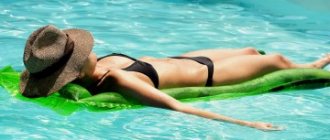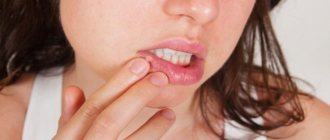Why do some people develop white spots that do not change color with any treatment and tend to spread? There may be many reasons, but there is still no exact definition explaining the origin of unattractive spots, there are only indirect assumptions. In winter, most of the affected skin is covered with clothing, although the hands always give away the person.
Significant suffering is caused by spots on the face, which cannot be hidden either in winter or in summer. But the problem is especially felt in the summer, when people rush to the shore of the reservoir, when they want to plunge into the coolness of the water and, of course, get a velvety tan.
It is known that such spots are extremely rare in children. This is a congenital defect , established in the prenatal period. And in adults it can be associated with some kind of disease or with diligent adoption of solar procedures. When the defect has already appeared, then an active search for the causes usually begins.
How to treat white spots on skin
The treatment option for white spots on the skin is determined by the doctor after examining the patient and making a diagnosis. In the “arsenal” of doctors there are special soaps, ointments, shampoos, creams, tablets and solutions. In some cases, skin grafting is required.
Cream and ointment
Creams and ointments do not solve the problem and do not lead to recovery, because they act exclusively on the dermis and not on general health. But these drugs help hide white spots and get rid of pronounced cosmetic effects:
- glucocorticoid ointments - Methylpred (350 rubles), Alclomethasone (320 rubles), help hide vitiligo spots;
- glucocorticoid ointment, which helps with both vitiligo and fungal skin infections - Betamethasone (170-180 rubles);
- antifungal agent - Irunin (352 rubles);
- universal ointment with a wide spectrum of action - Clotrimazole (100 rubles), used for lichen, psoriasis, fungal infections, eczema.
Betamethasone
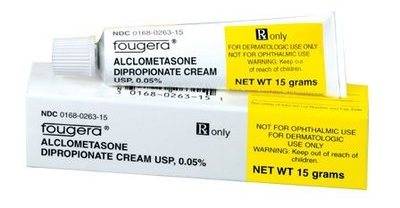
Alclomethasone
Shampoos, soap
Shampoos and soap can be used against white spots that are of fungal origin. Such products are purchased in pharmacies; they are considered as a remedy for dandruff and seborrhea; the most prominent representative of the line is Nizoral shampoo.
Such detergents can be used daily and for an unlimited period of time, until complete recovery.
Treatment with drugs
The most popular drug for the treatment of white spots is Melagenin Plus, which is actively used to treat vitiligo. They lubricate the affected areas twice a day, the therapy will be long-term - at least 3 months. If during the treatment process the skin is periodically exposed to ultraviolet rays, the speed of restoration of the color of the epidermis will become faster, and the first positive changes can be noted within 2 months from the start of treatment.
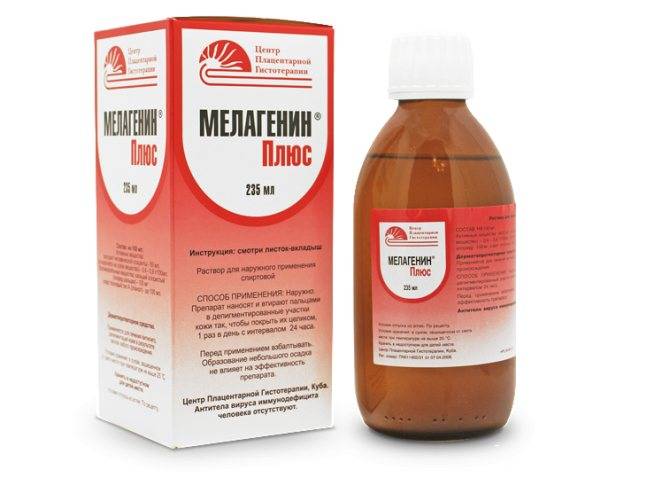
A dermatologist can also prescribe systemic antifungal drugs if the diagnosis reveals a corresponding skin lesion. Medicines are selected only by a specialist; independent choice will not give positive results and can be hazardous to health.
PUVA therapy
PUVA therapy is photochemotherapy, a unique technique that involves the simultaneous use of drugs and ultraviolet rays. This treatment will be effective against white spots of any origin; the PUVA bath procedure is actively used - the patient takes a bath with the drug Psoralen, then he immediately receives a portion of ultraviolet rays, which reduces the intensity of skin symptoms even with advanced psoriasis.
2-4 procedures are allowed per week; improvements will be noticeable after 4-6 visits to the doctor, but you should not interrupt the course - it lasts 2 weeks. White spots will disappear for at least 18 months, sometimes remission lasts several years.
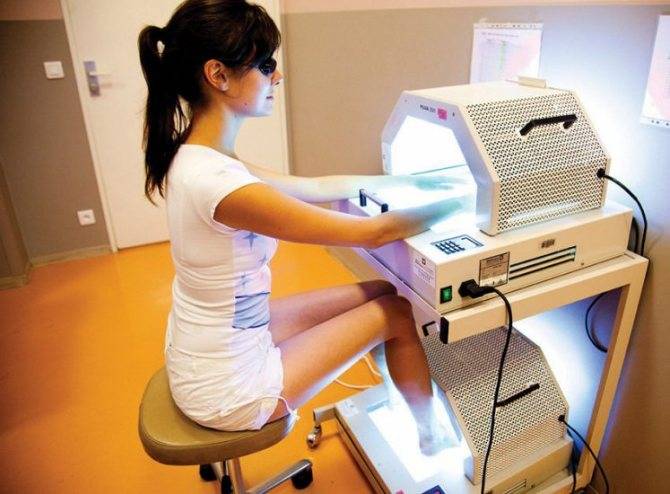
PUVA therapy
Skin graft
Skin transplantation is performed only for vitiligo, when the white spots are too large and therapeutic methods do not produce positive results. Skin grafting is a full-fledged surgical intervention that can be performed using three methods:
- autotissue – the patient’s dermis is taken to replace the affected skin (for vitiligo, this option is not the most effective);
- cellular – individual dermatological cells are “grown” in the laboratory, which are then transplanted into the patient;
- allotissue - the skin of close relatives is used for transplantation.
What to do if a child has a white spot on his body
If a child has a white spot on the skin, then you need to do the following:
- assess his general health - is there an increase in body temperature, is there any itching in the lesion;
- examine the spot and identify or exclude peeling of its surface, red borders, inflammation of the lesion;
- wash the skin thoroughly and dry;
- give the child a tablet of any antihistamine - Tavegil, Zodak, and so on.
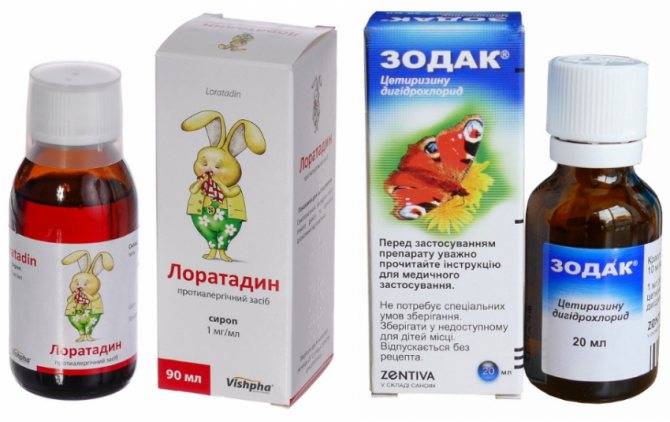
You need to wait 1-2 days, making the baby’s menu a dietary one, removing all possible irritating foods from it. If during this time the size of the spot has increased, new lesions have appeared, or the child’s general well-being has worsened, then you should immediately seek qualified medical help.
The use of ointments, folk remedies, and lotions is strictly prohibited - you can “erase” the clinical picture, which will make it difficult to make a diagnosis.
Main factors of the disease
They arise due to certain factors occurring in the human body. The most important reason for the appearance of such blots is the loss of the main pigment melanin by skin cells, which is responsible for the color of not only the skin, but also the hair, as well as the color of the eyes.
If there is a deficiency of such a substance when exposed to sunlight, the skin receives certain shocks, resulting in a disease. If the exposure was prolonged, then complete death of cells with melanin is possible.
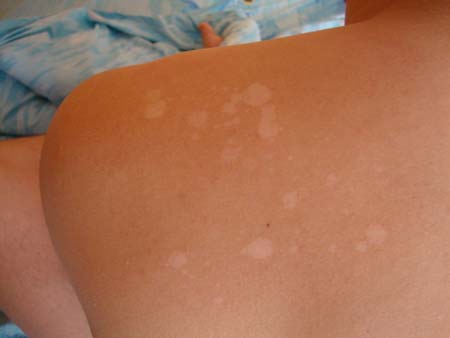
In medicine, such cells are called melanocytes. Also, abundant exposure to the sun leads to a negative side - melanocytes stop completely producing melanin. This disease or cause is called vitiligo.
It should be noted that white round spots appear on the back and shoulders due to a fungal infection. There is only one type of infection that affects the body - lichen.
Ringworm can be pink or pityriasis-like.
- Pityriasis rosea is not as contagious as pityriasis versicolor. It goes away slowly, without causing sudden deterioration or any pathological diseases. This disease manifests itself in the form of small round manifestations.
- Pityriasis versicolor is a continuation of the fungus and actively spreads to all areas of the skin, causing a lot of discomfort to a person.
Speaking about other possible factors of the disease, it is worth noting hypomelanosis. As a rule, this phenomenon occurs as a result of severe infectious infections. Perhaps the infection had already been cured, but the disease manifested itself a little later.
In a child, the appearance of white spots on the back is characterized by congenital specificity. Treatment of hypomelanosis can proceed very quickly with proper therapy.
They also note factors that are not associated with the disease, but lead to the appearance of white spots on the back, which can be seen in the photo. Among these are:
- sweat gland activity;
- taking medications;
- pressure.
Useful tips for prevention
In order not to ask the question of how to cure white spots on the back, you must adhere to the method of preventing this disease.
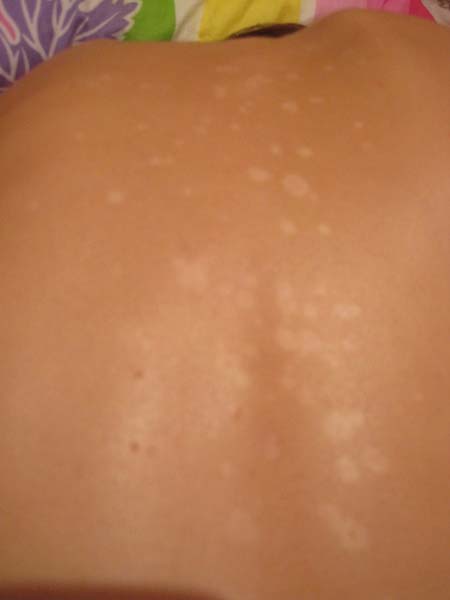
It is necessary to follow useful tips.
- Firstly, when tanning, it is necessary to take into account the phases of activity of ultraviolet rays. Scientists have established and proven that such rays are less active, and therefore less dangerous, before 11 o’clock in the afternoon or after 4 o’clock in the evening. Therefore, the best time for tanning is before 11 and after 4.
- Secondly, we must not forget about the total time spent under the sun. The duration should not exceed twenty minutes, since exposure to rays leads to faster cell death, as well as skin aging. At the same time, such short periods of time under the sun's rays allow you to get a better, uniform tan.
- Thirdly, during prolonged exposure to the sun, it is necessary to use special creams that help protect against burns.
Such simple prevention methods will prevent the appearance of white spots on the back after sunbathing.
Treatment of dermatological disease
Currently, the treatment of white spots on the back and shoulders is a very pressing problem. However, not always any methods or drugs help stop the course of the disease and lead to complete recovery of the body.
Among the medications, the following drugs are noted.
Causes of brown spots on the body after sunbathing
Getting rid of pigment spots after sunbathing is difficult, but if you make an effort and use cosmetics correctly, it is possible. For these purposes you can:
- Contact a cosmetologist;
- Apply traditional medicine methods;
- Use cosmetic whitening creams.
With the help of medical cosmetology methods - laser therapy and chemical peels, you can get rid of brown spots after an unsuccessful tan.
- The laser affects the cells of the epidermis - chromatophores, which are responsible for intense pigment staining. Laser therapy is considered a safe method for getting rid of hyperpigmentation. The greatest effectiveness is achieved in cases with a small area of epidermal damage.
- Chemical peels are used on areas of the skin with deep lesions. The skin is exposed to acids - glycolic, malic, tartaric, lactic. The disadvantage of chemical peeling is that the patient will have to undergo a series of procedures to reanimate damaged areas of the epidermis. During the treatment period, it is strictly not recommended to be exposed to ultraviolet rays, so the procedure should be carried out in winter.
| Name | How does it work | How many procedures will be required |
| Chemical peeling | Exfoliates the surface layer of skin containing melanin due to the action of:
| 2–10 |
| Mechanical peelings (scrubs, gommages) | The top layer of the epidermis containing the coloring pigment is removed. | 2–8 |
| Mesotherapy | Treating the skin with a mesoscooter or injecting a special preparation provides a brightening effect and normalizes further melanin production. | 3–6 |
| Laser resurfacing | The laser beam destroys pigmented cells without affecting the rest. | 1–3 |
| Photo procedures | Due to the action of high-intensity light streams, the skin is cleared of pigment. | 5–6 |
| Remedies for pigment spots after sunburn | |
| Salicylic-zinc paste | This product is suitable for eliminating freckles on the face, arms, and back after sunbathing. The composition contains active substances - zinc oxide and salicylic acid. They have a keratolytic and plastic effect, causing exfoliation of the skin and promoting melanin into more accessible layers of the epidermis. |
| Syntomycin ointment | The product contains the antibiotic syntomycin and chloramphenicol, as well as castor oil - substances that have antiseptic properties and a skin lightening effect. |
| Clotrimazole cream | The cream contains the active ingredient clotrimazole, which is active only on the surface of the skin, but does not enter the lymph and blood. The cream fights fungi and bacteria well. It is often recommended for other skin problems, including pigmentation on the face. |
| Skinoren gel | Non-hormonal gel Skinoren is an effective medicine with antibacterial, whitening and anti-inflammatory effects. It is prescribed for extensive pigmentation, seborrheic dermatitis, acne, rosacea. The main active ingredient is azelaic acid. It normalizes the production of melanin pigment, which allows you to get rid of the appearance of new spots and at the same time lighten existing ones. |
| Vichy cream against pigmentation | The active ingredient is kombucha kombucha. It is obtained by processing premium grade Ceylon tea. The mushroom has a powerful antioxidant property and saturates cells with beneficial acids. The composition includes vitamin C, which works against pigmentation, relieves inflammation, and gives facial skin radiance. |
Before using cosmetic preparations for pigmentation, it is important to consider a few tips for their application:
- Before using any product, it is recommended to obtain prior approval from a dermatologist.
- Immediately before applying the composition, you should test it on the crook of your elbow to rule out the possibility of an allergic reaction.
- Study the abstract carefully.
- The most relevant periods of treatment are autumn and winter - at this time solar activity is minimal.
- Any product is applied exclusively to cleansed facial skin.
- The product should be distributed pointwise and evenly, applying it to problem areas
- Avoid contact of the composition with the surface of mucous membranes and the eye area.
- You cannot use several products of the same spectrum of action at once.
Causes of white spots
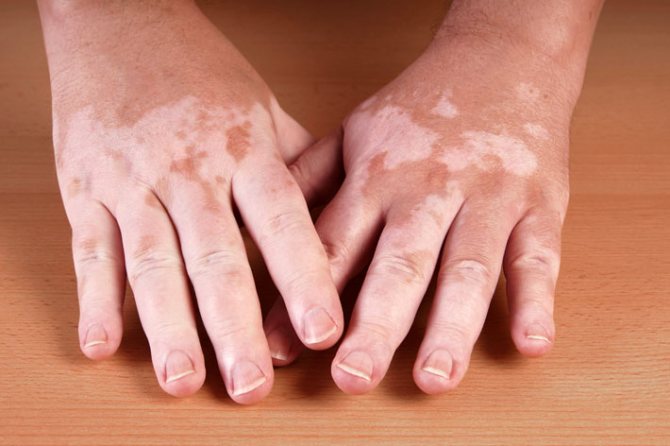
There are many reasons for the appearance of white spots on tanned skin, from hereditary predisposition, concomitant diseases, to methods of tanning:
- Vitiligo. A disease associated with pigmentation disorders. The reasons for the development of this disease have not yet been clarified; it can presumably be provoked by diseases of the internal organs, frequent stress, and dysfunction of the immune system. At some point in life, the human immune system begins to destroy its own melanocytes - the cells that contain and produce pigment.
White spots can appear and disappear suddenly; they appear especially clearly during active sun exposure and occupy large areas of the body: the neck, stomach, arms, and less often the face and back. There is no pain and the disease is not contagious. But it can be passed on through genes. Since the disease has not been fully studied, there are practically no drugs to cure it. It is believed that when the immune system is strengthened and the body is restored, the spots can go away. For severe manifestations of this skin defect, hormonal drugs and immunomodulators are prescribed.
- Hypomelanosis. Another genetic disorder manifested by the appearance of white spots. Representatives of the fair sex are more often affected by it. The causes and treatment of this phenomenon are still unknown. Unfortunately, no one has yet managed to get rid of this disease. It can be inherited by a girl from her mother. The only way out in this situation is to avoid exposure to ultraviolet rays on open areas of the body. Of course, you can try using special sunscreens in the form of sprays and creams. But they are not suitable for everyone.
- Hormonal imbalances, endocrine diseases. Melanin synthesis in the body is controlled by hormones. It is not for nothing that during pregnancy, during menopause, when hormonal surges and declines are observed, pigment spots appear on the skin of women. Along with increased production of melanin, a lack of it may also occur, which will appear as white spots. Factors such as taking hormonal drugs, diseases of the kidneys and adrenal glands, and the endocrine system can also affect the level of hormones, and, consequently, the amount of pigment and its uneven distribution.
Treatment in this case involves restoring hormonal balance. After childbirth, the body recovers, the spots can disappear on their own quite quickly. For existing diseases, appropriate therapy is necessary. For preventive measures, during periods of hormonal changes or a course of taking appropriate medications, it is necessary to avoid exposure to direct rays of the sun and avoid tanning.
- Fungal diseases of the skin (lichen). The most common cause of white spots is the yeast fungi of tinea versicolor and pityriasis versicolor. Fungi affect the upper layers of the epidermis; their active reproduction interferes with the normal production of pigment. White spots precisely indicate the location of the lichen. The disease is considered conditionally contagious. Its occurrence can be triggered by poor personal hygiene, decreased immunity, and a humid climate.
To prevent fungal infections, you should follow basic rules of personal hygiene. If infection occurs, then antifungal ointments will come to the rescue. You should definitely consult a dermatologist.
- Scars. If the skin has keloid scars, scars from mechanical damage, as well as stretch marks, then these areas will no longer tan. There are no melanocytes in the healed tissue, therefore, when tanning, these areas remain white. On white skin such defects are not noticeable, but on a darkened background they are obvious. Small spots can be disguised using foundation. If there are large flaws, laser resurfacing is prescribed.
- Taking certain medications. There are a number of medications that cause increased photosensitivity. When taking these medications as a course, it is better to avoid going to the sunny beach. Otherwise, white spots and a rash may appear on the skin of the back, abdomen, and chest. There is no treatment provided here; after stopping the medication, the activity of melanocytes returns to normal. In order not to look like a “panther”, you should decide for yourself what is more important during this period – treatment or tanning.
- Infectious diseases. With some infections, such as leprosy and syphilis, immunity sharply decreases and the course of many processes in the body is disrupted. This may also manifest itself as a failure in the production of pigmentation. Complete cure of the infection guarantees the disappearance of depigmentation. Prevention is obvious - compliance with basic hygiene rules.
- Poikiloderma Sivvat. An atrophic skin disease with a poorly understood etymology. It causes a mesh-like lesion of the epidermis, which looks like frequent white spots on the chest and neck. Treatment consists of eliminating external signs of damage.
- Sunburn. Excessive exposure to the scorching rays of the sun without the necessary protection leads to skin burns. Severe redness and blisters are damage to the upper layer of the dermis. During the regeneration process, damaged cells are replaced with new white ones, which look like light spots on a tanned body.
The same marks can appear if sunscreen is applied unevenly. Where the cream was applied thicker than in another area there will be a white spot. To prevent this from happening and to ensure an even tan, cream and other protective beach cosmetics must be applied carefully, thoroughly and in advance of going to the beach.
- Tanning in the solarium. It is known that tanning under the artificial “sun” is much more aggressive than natural tanning. The skin is exposed to ultraviolet radiation many times more than on the beach on the hottest day. White spots on the skin after a session in a solarium are by no means a rare occurrence. It can be caused by incorrect procedure, insufficient amount of protective agent applied, or illiterate selection of it. The main mistake is to use a cream intended for tanning in the sun in a solarium. Tanning products on the beach and under lamps have one goal - a beautiful tan, but the principle of action is completely opposite. To avoid the appearance of unsightly spots on the skin, you should sunbathe in the booth carefully. There is no need to strive to acquire a rich chocolate shade in one session. And you shouldn’t sleep at this time; it’s better to periodically change the position of your body so that all its parts receive the same portion of the rays.
- Depression, nervous breakdowns. Failures in the activity of the nervous system reduce the protective functions of the body. This is often expressed by deterioration of the skin condition. Some processes may subside in the epidermis. It is known that the sun has a beneficial effect on improving a person’s emotional state. But this does not mean that you can get rid of depression by lying on the beach for many hours. Everything should be in moderation. Then you will not only improve your mood, but also get a beautiful tan without white spots.
Why do spots appear after sunbathing?
Men and women are equally at risk of getting dark or white spots on their bodies instead of tanning. What is the reason for this reaction?
- individual reaction of the body to climate change or exposure to the sun;
- increased sensitivity to ultraviolet radiation;
- improper use of sunscreens;
- reaction to self-tanning;
- allergy to sunscreen cosmetics.
More often, age spots appear from the sun in red-haired and fair-haired people. It is genetic and can appear in a child under 6 years of age. If dark areas are detected, it is necessary to reduce periods of exposure to the sun, replace sunscreens, and consult a cosmetologist or dermatologist.
If white spots appear, the cause should be sought in the following:
- Tinea versicolor. You can become infected in common areas and solariums. The main symptom is the formation of small spots of irregular shape that tend to unite. The skin in this area itches and peels. Antifungal agents will help eliminate the disease.
- Sunburn. Prolonged improper tanning causes a burn, at the site of which a blister forms, followed by a further regeneration process.
- Vitiligo. Dermatological complex disease. The body is covered with light spots that are not inflamed, not flaky or itchy. Treatment is carried out by a doctor, but is often aimed at maintaining the condition and preventing complications.
Whitening of the skin can be caused by scleroderma, medications, cheap cosmetics and some types of fungus. The main recommendation is to visit a dermatologist.
Causes and mechanisms
The color of the skin is determined by the presence of melanin, a natural pigment, in the epithelium. If its synthesis (tyrosine deficiency) or deposition in cells is impaired, a phenomenon known as hypochromia or leucoderma is observed. White spots appear on the skin, which remain even after tanning.
The destruction of melanocytes occurs under the influence of many factors - external and internal. Among the causes of leukoderma it is worth noting:
- Infectious and inflammatory pathology (dermatomycosis, syphilis).
- Autoimmune diseases (lupus erythematosus, scleroderma).
- Occupational hazards (contact with chemical compounds).
In addition, this condition occurs due to endocrine disruptions, immunity disorders and helminthiasis. A separate group includes idiopathic hypochromia, the cause of which is not fully established (vitiligo).
Sun spots are a slightly different situation. In the skin, under the influence of ultraviolet rays, the formation of melanin is stimulated, which is a kind of protective reaction that increases the resistance of the epithelium to insolation. If uneven pigmentation is observed, then the following reasons can be assumed:
- Not enough sunscreen or too much sunscreen.
- Changes in hormonal levels (pregnancy and breastfeeding, the beginning of the menstrual cycle, menopause).
- Endocrine pathology (hypercortisolism, Addison's disease).
- The use of certain medications (oral contraceptives, antibiotics, essential oils).
Sensitivity to solar radiation largely depends on the individual characteristics of the skin. Based on the reaction to ultraviolet radiation, the following types of epithelium are distinguished:
- The first is snow-white skin and albinism (quick burns).
- The second is very fair skin, freckles (burns from fairly short exposure to sunlight, pale tan).
- Third - the skin is slightly darker (light brown tan).
- Fourth – olive skin color (moderate tan, less susceptible to burns).
- Fifth – dark coloring (dark and even tan, practically no burns).
- The sixth is black skin that never burns (Negroid race).
Thus, many factors influence the development of white or pigmented spots on the skin from the sun. Along with external influences, it is necessary to take into account the characteristics of the skin, the functioning of the hormonal, immune and other systems. Both local processes with damage to the epithelium and systemic changes in the body lead to changes in physiological coloring.
If white spots appear after tanning or, conversely, the pigmentation of certain areas has increased, then first of all you need to determine the source of the problem.
Masks
The easiest way to lighten the epidermis using traditional methods is to make a mask from special whitening ingredients. Natural brighteners include citrus fruits, dairy products, some herbal infusions and fruit acids.
A very simple and effective whitening face mask at home is made from strawberries. This product will not only get rid of freckles, but will also help clear your skin of pimples, blackheads and dark circles. You need to take fresh berries, rinse them well under water and puree them. Apply to the entire face except the eye area. Keep for 20 minutes, then rinse with water and lubricate your face with cream. Repeat every day, but only if there are no allergies.
Orange and lemon also help against increased pigmentation on oily skin. To whiten your face from tan and blemishes with lemon, you need to squeeze 3 tablespoons of juice from fresh fruit. Use the liquid immediately - it quickly loses its properties. Apply to the epidermis with a cotton swab and leave for 20 minutes. The method is also recommended against acne during pregnancy. For quick results, use 2 times a day.
A peeling mask with baking soda and hydrogen peroxide helps well against age spots. This method removes the upper keratinized layer of the epidermis, leaving in its place young and undamaged. Peroxide is also known as an excellent folk bleaching agent. You will need:
- Half a teaspoon of soda;
- 5 drops of peroxide.
Apply in circular motions to the face, rub in for 5 minutes, then leave for 10 minutes. Try to keep the mask layer thicker on especially damaged areas than on light areas. Repeat every other day, but the result will be noticeable after the first time. For greater effectiveness, you can add a little lemon or strawberry juice to the pulp. This method is not suitable for sensitive or damaged skin.
Cucumber masks will help whiten the skin of your face and neck after a sunburn. They gently act on the studded layer, brightening it and moisturizing it. The easiest and fastest way to lighten your face if it is faded is to simply apply fresh cucumber slices to the epidermis. Leave them for 15 minutes, then turn them over to the other side and leave them for another 15. There is no need to wash your face.

Serum or cucumber puree is great for dark spots after acne and sun. This is also a good way to restore tone to dull and mature skin. The vegetable is peeled and grated on a fine grater; 1 dairy product is taken for 2 tablespoons of cucumber puree. Keep for 10 minutes, repeat every other day.
A mixture of parsley, strawberries and cucumber will help to quickly whiten a dark complexion from a tan. This is not only an emergency lightening option, but also a good vitamin shake for the skin. All components are crushed and mixed in equal parts. Rub the mixture into your face for 3 minutes, then leave for 20. You can make the mask every day.
Fat sour cream and cucumber will help lighten a dark face slightly and relieve the heat from a burn. There are different cooking options:
- Apply sour cream separately, and place cucumber slices on top of it;
- Grate the vegetable, combine with sour cream and lubricate problem areas with the mixture.
Both options are effective, but the first can also be a good way to relieve puffy eyes after a sleepless night. You cannot keep sour cream for more than 20 minutes - the epidermis may turn red. Similarly, you can use kefir instead of sour cream, but then the mixture will turn out runny.
Toothpaste is also applied to individual dark spots and isolated freckles. This option is not the most effective, because this hygiene item may cause burns on the epidermis.
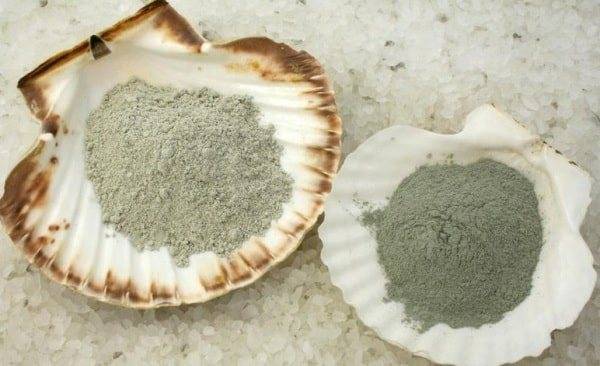
Blue clay will help get rid of age spots. Cambrian mineral powder has a number of medicinal properties: it normalizes the functioning of the sebaceous glands, cleanses pores, tightens the epidermis and quickly brightens it. A high-quality scrub for burnt skin is made from a mixture of tea tree oil, mineral water (or chamomile decoction) and clay.
- Clay is combined with mineral water or decoction in a 1:1 ratio;
- Then 5 drops of oil are added to it;
- Apply the ointment to your face and neck and leave until the mixture hardens. Then rinse off. Thanks to the abrasive particles, this product acts as a scrub and will help clean not only the face, but also the hands or body.
How to whiten skin at home
Firstly, you need to use special whitening creams, lotions and tonics. They contain components that lighten pigmentation slightly over and over again. These skin care products should be used regularly. Once a week you need to exfoliate to remove the top keratinized layer of skin. After all, pigment accumulates mainly on the surface of the epidermis. The rest of the time you need to make caring and brightening face masks that will help you even out your color. Here are the most popular and truly effective remedies for getting rid of age spots.
- Parsley and cucumber.
Grind half a cucumber in a blender along with a bunch of parsley and apply it to your face. Leave for 10 minutes and then rinse off the mask with warm water. - Lemon and kefir.
Lemon should be mixed with kefir and apply this mask to your face every day. It not only brightens, but also perfectly moisturizes and tones the skin. - Chamomile.
A strong decoction of chamomile whitens the face. You can wash your face with the decoction in the morning and evening. Mix it with alcohol to create a brightening lotion for oily skin. Freeze chamomile in cubes for an invigorating skin-lightening treatment. - Lemon, sugar, butter.
Mix a tablespoon of lemon with the same amount of any cosmetic oil. Add a teaspoon of sugar and begin peeling until the sugar dissolves. Citric acid corrodes the surface of the skin, sugar crystals exfoliate dead skin flakes, and the oil moisturizes and nourishes it. This is an excellent homemade scrub recipe that perfectly cleanses the skin. - Hydrogen peroxide.
This is another composition that whitens any surface, including skin. But peroxide needs to be applied pointwise - directly to dark areas to even out the overall tone of the face. After peroxide, apply nourishing cream to your face and massage it in with your fingertips for 5 minutes. This will moisturize the epidermis, otherwise the skin will begin to peel.
All these ingredients have powerful whitening properties. They can be used individually or combined in different masks. The main thing is not to keep the mask on for too long and monitor the process, otherwise your face will lighten very much.
When it comes to combating pigmentation, it is very important to pay attention to prevention. Be sure to use sunscreen with a high SPF level when going outside. Wear caps, hats and other headwear with wide brims to protect your face from direct sunlight
Especially after peeling. Avoid solariums, even if tanning seems attractive to you - this is a direct path to pigmentation. If pimples and blackheads appear on your skin, do not press or injure it - consult a cosmetologist. If the area of pigmented skin increases, you should definitely see a doctor. Timely measures will help you restore your skin to its former purity and naturalness. Be irresistible at any age!
Wear caps, hats and other wide-brimmed headwear to protect your face from direct sunlight. Especially after peeling. Avoid solariums, even if tanning seems attractive to you - this is a direct path to pigmentation. If pimples and blackheads appear on your skin, do not press or injure it - consult a cosmetologist. If the area of pigmented skin increases, you should definitely see a doctor. Timely measures will help you restore your skin to its former purity and naturalness. Be irresistible at any age!
Localization of pigment spots after sunbathing
Depending on where the pigmentation is located, a dermatologist will be able to recognize the cause of its formation.
If going to a solarium or sunbathing results in age spots for you, the reasons may be as follows:
Hormonal disorders in women (take precautions: do not sunbathe during pregnancy, lactation or during treatment on hormones); Deficiency of vitamins and microelements in the body. An exhausted and sick body has difficulty coping with the function of producing melanin; Liver and kidney diseases; Infectious processes developing during tuberculosis; Tumor neoplasms of the epidermis; Disturbances in melanin production in cells; Treatment with sulfonamides; Allergies to used cosmetics. Everyone’s body is different
Pigment formations may occur after visiting a solarium. This usually happens with clients who are hypersensitive to unnatural UV radiation. Also, the solarium apparatus may not work correctly - then it emits a large amount of ultraviolet radiation, which is unacceptable and, in turn, has an adverse effect on human skin
Everyone's body is individual. Pigment formations may occur after visiting a solarium. This usually happens with clients who are hypersensitive to unnatural UV radiation. Also, the solarium apparatus may not work correctly - then it emits a large amount of ultraviolet radiation, which is unacceptable and, in turn, has an adverse effect on human skin.
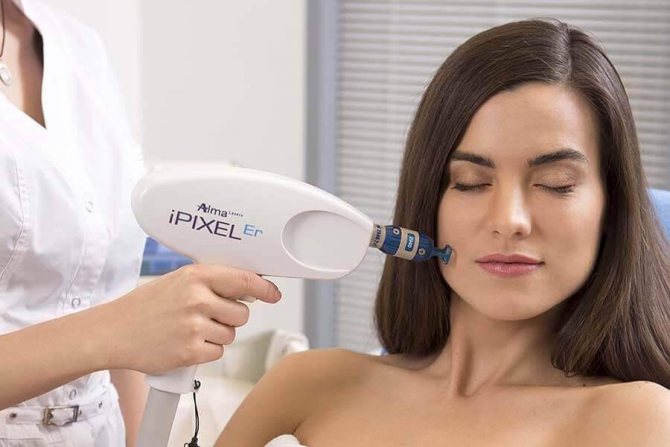
What to do with pityriasis versicolor
Another name for this pathology is lichen versicolor, which very accurately reflects the polymorphism of clinical manifestations. The disease is of infectious origin and is caused by the penetration of a special yeast fungus into the stratum corneum of the epidermis. As a result, spots of various shapes and colors form on the skin, without clear boundaries, merging with each other over time. Most often they are located on the back and chest, less often on other parts of the body.
The spots can be pink, brownish, yellow, but when exposed to sunlight they begin to lighten. Therefore, they look like white areas against the background of healthy tanned skin. The mechanism of their formation differs from that in vitiligo, when there are no melanocytes at all. In pityriasis versicolor, melanocytes are present and produce melanin, but the fungus prevents the pigment from spreading into the upper layers of the skin, blocking the channels for its exit from the cells.
Pityriasis versicolor can be cured using a combination of external (ointments, mash) and internal (tablets) antifungal agents. Depending on the stage and extent of the pathological process, therapy may take 1–2 months. Unlike vitiligo, with pityriasis versicolor you need to sunbathe in the sun, since ultraviolet radiation helps to destroy yeast filaments, preventing the formation of new fungal cells.
The most frequently asked questions and their answers
In such a situation, the best decision is to visit the pharmacy and buy a special after-sun cream or ointment for burns.

Redness from sunburn on the face
My back itches a lot after sunbathing, but I don’t get sunburned, what could it be?
There can be many reasons: allergies, irritation, fungal infection (occurs after swimming in polluted waters). You can try rubbing it with the infusion of the string. If there is no improvement, you should visit a doctor.
The skin on the face peels after sunbathing, what should I do, what should I apply?
Most likely, the epidermis layer is dried out and dehydrated. Use a nourishing or moisturizing face cream, make masks based on sour cream, oatmeal, and honey.
How to remove redness after sunbathing using improvised means?
You can make this mask: grate raw potatoes, add a little lemon juice to it and apply to the skin for 15 minutes.
Another effective way is to beat a chicken egg into a foam and rub it on the skin, leave for 20 minutes, then rinse.
- I have white spots after tanning, how can I hide them?
White spots after solarium
White spots on the body indicate some kind of disorder in the body; it is better to immediately visit a dermatologist. They can be temporarily disguised by applying foundation or self-tanning cream.
After a summer vacation by the sea, pigment spots appeared on the back, how to get rid of them?
It is difficult to regularly make any masks on your back on your own; it is better to immediately go to a cosmetologist and solve the problem in 2-3 sessions.
Why does my skin itch after sunbathing?
It’s hard to say, the reasons can be different, from the most banal – tissue death and regeneration occurs, to more serious ones – allergies, infections (fungi, lichen, staphylococci).
Fighting methods
Often, identifying and eliminating the cause of pigmentation automatically relieves chloasma.
Stains after sunbathing or from poorly performed cosmetic procedures can be removed using modern professional cosmetology products or using traditional methods (depending on the degree of damage to the skin).
In professional aesthetic medicine the following methods are used:
- chemical peeling;
- photorejuvenation;
- mesotherapy;
- laser correction.
To protect your skin from the sun and get a beautiful tan, you need to use products with a brightening effect (cream, serum, mask, peeling, etc.).
A mask or peeling should be done no more than twice a week. This will help cleanse the skin of the stratum corneum, renew and speed up metabolism at the cellular level.
Using a cream or serum will help remove stains, whiten the skin, moisturize and provide a protective effect for a certain time.
At home, masks and infusions made from accessible and familiar ingredients will be a reliable ally in the fight against chloasma:
- Parsley poured with boiling water is infused for 2 hours, after which the resulting infusion is used to wipe the spots on the face in the morning and evening;
- You can also wipe your face with cucumber juice twice a day;
- The acid contained in citrus juice effectively lightens the skin (you can use the juice, or you can make a compress directly from the slices);
- Add berry juice (1 tbsp) to currant leaves (20 pcs.), poured boiling water (200 ml), leave for half an hour, then strain and make a compress (twice a day);
- Grind strawberries and cherries until pureed, use the mixture as a mask (exposure time - 30 minutes);
- Dissolve 40 g of yeast in a teaspoon of lemon juice, add 1 tbsp. milk (mask exposure time – 20 minutes);
- To 1 tbsp. cream mixed with carrot juice (1 tsp), add yolk (leave the mask on the face for 20 minutes).
Pigment spots themselves cause more aesthetic inconvenience than they are a serious pathology. Regardless of what they appeared after, from sunburn or for another reason. In any case, age spots are a dubious decoration.
Everyone individually selects for themselves a remedy that will help get rid of chloasma during tanning.
Prevention and treatment of skin spots after sunbathing
Self-tanning gives a beautiful and even tanning effect without exposure to the sun.
People who are prone to uneven tanning, blotchiness or sunburn should avoid excessive sunbathing. For those with very white skin or albinos, they are not only contraindicated, but also harmful. Since these people are at risk for skin cancer.
People with fair skin should sunbathe only in the morning and evening, using cosmetics with an ultraviolet filter. But you shouldn’t hope too much that creams and ointments will completely save you from the harmful effects of ultraviolet radiation. In addition, many people use them incorrectly. There are products that cover the skin with a protective film that does not allow harmful rays to pass through. But its duration of action is short and is indicated on the packaging.
Such products are applied to the skin before you decide to sunbathe. Other creams should be applied after sunbathing to prevent further exposure to the sun on the skin.
People with dark skin are best adapted to sunlight. They rarely burn and do not become covered with characteristic spots after tanning. Skin care products in their case include only moisturizers.
Treatment for post-sun pigmentation depends on which of the above spots appear on the skin:
- For sunburn. It goes away on its own. It is advisable to stay out of the sun for some time and use a soothing after-sun cream or aloe juice. Doctors recommend ointments that contain panthenol. You can take a painkiller or antihistamine. If the skin is very damaged and blistered, you should consult a doctor immediately to rule out complications.
- For light spots. Vitiligo is a very complex disease and doctors today cannot restore the lost ability to pigmentation. There is only one way out - do not sunbathe so that the white marks do not appear so clearly. And follow all the dermatologist's recommendations. For tinea versicolor, if diagnosed by a dermatologist, you should take more sunbathing. White marks will remain for a long time, but in this case the main thing is to get rid of the disease.
- Dark spots will disappear along with your tan. You can speed up this procedure in beauty salons with microdermabrasion, peeling or laser resurfacing. At home, any whitening creams and herbs are suitable. But so that this does not happen again, and the next tan is even and beautiful, it is necessary to treat the internal organs.
It must be remembered that any type of pigmentation appears under the influence of sunlight. And therefore, in order to protect yourself from unpleasant aesthetic problems associated with uneven tanning, it is enough to avoid exposure to the sun without applying a protective cream with a high ultraviolet filter, wear hats with brims, and cover your shoulders and arms with clothes.
Have you ever experienced spots on your skin after sunbathing? How did they manifest themselves and how did you get rid of them? Share your experience with us by leaving a comment on the page.
Defects after tanning
There are many chocolate tan lovers. They lie in the sun for hours and visit solariums. But instead of an even tan, they find unsightly white spots on their shoulders and back. Seeing such a phenomenon, people get scared. There are several causes of discolored skin after sun exposure.
The brown tint to the skin is given by a special pigment - melanin. An insufficient amount of it is the cause of discolored spots.
Depigmentation on the back after sunbathing can be caused by the following factors:
- Stress;
- Toxic poisoning;
- Some diseases of internal organs;
- Pathologies of the immune system.
Vitiligo is difficult to treat, and the real causes are not fully identified. But control measures have already been developed. Doctors prescribe immunomodulators and hormonal ointments, which help reduce the number of spots and stop the appearance of new ones.
Infection with various types of lichen leads to the appearance of pale or pronounced white spots on the back. Treatment is prescribed by a doctor.
To avoid skin fungus, it is important to maintain hygiene and follow basic safety rules:
- Do not wear or try on other people's shoes or clothes;
- Do not use other people’s personal belongings (comb, brush, washcloth, towel);
- In public places, always use protective equipment - rubber slippers, disinfection gels, etc.;
- Personal hygiene.
There is a certain category of medications that lead to increased sensitivity of the body to the sun. It is better not to sunbathe during the period of taking them. Depigmentation is also possible.
Folk remedies in the treatment of age spots
Traditional methods are also used to remove age spots:
An excellent way to lighten the skin is by wiping with freshly squeezed lemon juice (the ratio with water is 1/10), as well as applying masks containing vitamin C to the face and neck (if the patient is not allergic to it).
For a long time, our grandmothers used other whitening agents - parsley juice and cucumber. The parsley was finely chopped, then poured boiling water over it and left to infuse. The strained solution was used to wipe the areas of pigmentation several times a day.
Fresh cucumber must be grated and the paste applied to the face for 20 minutes, after which the mask must be washed off. Cucumber not only gets rid of pigmentation, but also makes the skin silky and soft.
Rubbing with fresh grapefruit juice and a curd mask to which hydrogen peroxide (15 drops) and ammonia (15 drops) are added help to discolor pigment spots. After 15 minutes, the mask should be washed off. Kefir also whitens the skin well, which is recommended to wash your face several times a day.
Cosmetic clay helps a lot in the fight against pigmentation. Masks are prepared from it, to which soda, hydrogen peroxide and talc are added. Leave the mask on your face for no more than 20 minutes.
If traditional methods for removing areas of pigmentation do not help the patient, it is necessary to turn to traditional medicine or cosmetology. Perhaps the pigmented areas are located too deep, and folk remedies affect the skin more superficially.
Oh damn, we found a problem with spots, you glued Ansil for a couple of months and the skin was all white and clean. Just like Tide Current for the body))
Olga, please explain, what is Ansil glue?
I don’t want to smear all sorts of chemicals on my face. It seems like our grandmothers used to lighten their faces with badyagi, a natural remedy. True, there is one drawback - it causes temporary redness of the skin, but you can be patient for the sake of the result. Badyaga even helps remove uneven tan. Old age spots are more difficult to deal with and will require persistence and time. Only acid peels provide quick results, but here the choice is yours.
Post Views: 958
